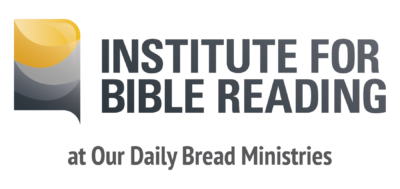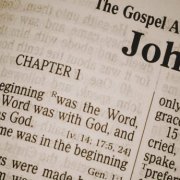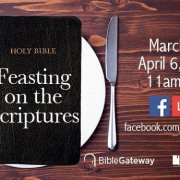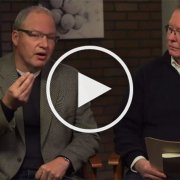From “No Bible” to “Know Bible” Part 4: Location, Location, Location
Editors Note: From “No Bible” to “Know Bible” is a 6-part series on the path toward great Bible engagement. Click here to read Part 1, Part 2, and Part 3.
What does it mean to receive the Bible on its own terms? Dynamic, living Bible engagement happens when a community:
- has good access to a well-translated text presented in its natural literary forms,
- regularly feasts together on whole literary units understood in context,
- understands the overall story of the Bible as centered in Jesus, and
- accepts the invitation to take up its own role in God’s ongoing drama of restoration through
the power of the Spirit.
When the Scriptures are received on their own terms like this they can once again become God’s speech act—instructing, revealing, convicting, judging, comforting, healing, and saving with all their intended power
Part 4: Location, Location, Location
Let’s suppose the preliminaries are in place and we have a well-translated and well-formatted Bible. This kind of Bible is intentionally built for reading and for understanding. We are committed to feasting (not merely snacking) and doing it together, in community.
So we take the plunge and begin. We read the Scriptures at length and in depth.
But if we are indeed doing more than scanning for our favorite verses, we can’t help but immediately notice that there’s something very unfamiliar, if not downright strange, about much of this material. The world that is described—from the things that people do to the way they think—is most decidedly not our world.
So we should never begrudge the Bible its context. It is not a problem to be solved, it is a gift to be received.
The ancient Near Eastern world is the natural habitat of all the stories of the Bible. The different kinds of writing in the Bible and the shape of the big story they tell are all deeply connected to this ancient world they were born in.
As when buying real estate, so in the Bible: location is everything.
The deep connection of the Bible to the real world, to a particular time and place in our long history, is a gift from God. This embeddedness of God’s revelation in God’s world—cultural, historical, human and complex—is exactly where we want his revelation. This demonstrates clearly that God takes our world and our setting with real seriousness. He does not merely drop his message from heaven in some timeless way. He comes into our world with his message, and ultimately with himself. It is precisely this world and our time—the human story—that God comes to redeem.
So we should never begrudge the Bible its context. It is not a problem to be solved, it is a gift to be received. For it is this context that tells us God is entering our own story.
Here, then, are the things we should know to put ourselves smackdab in the middle of the Bible’s action:
The Literary Context
The Bible is a collection of different kinds of writing from the ancient world. So the first question to ask ourselves when we’re reading is: what kind of writing is this and how does it work? How did the variety of literatures in the Bible—history writing, poetry, law codes, letters, prophecy, parables, proverbs, songs, and apocalyptic visions—function in the ancient world? The first location we must get familiar with is: how do these kinds of words do their work? What kind of book are we reading right now?
The Historical/Cultural Context
Next, we embrace the recognition that this revelation from God was given in particular historical moments and cultural settings. God didn’t change everything at once, but rather began working with people right where they were. So we see the Bible assuming ancient understandings of marriage arrangements (polygamy), how work got done (slavery), and who ran things (patriarchy). God introduces redemptive movement into all these contexts, but again, it didn’t happen all at once. We need to learn how to hear these sacred words the way their first audience would have heard them, and watch for how change was beginning to happen.
The Narrative Context
Finally, if we take seriously the fact that the Bible is an ongoing story, then we will learn to always ask of any particular passage: Where in the story are we? The Bible is a canon, an assembly of books that come together to tell the compelling story of God and the world. In stories, things don’t stay the same. They move along, so there are changes, surprises, and new developments. The Bible is no different. Just because something was true for God’s people in the earlier part of the story doesn’t mean it was his final word on the matter. God’s story moves toward God’s ultimate purpose. When we read we look for how the story is developing—what’s changing and what’s staying the same.
______________________________
Karl Barth once said that there is a strange new world to be discovered within the pages of the Bible. And it’s true, there is. The whole big collection is about God’s long-term project to turn this newness into the dominant reality of the universe. But this new world comes to birth within a strange old world that must first be understood on its own terms.
If we are willing to take this journey, to go back then before returning to here and now, the Bible’s promise is that we will find the enduring, restorative meaning that’s been there all along. Then we will ask: What is the trajectory of such a meaning into our world and our lives today? Where is the story going? And the Scriptures will shine their light and we will see everything more clearly.
Continue to Part 5: The Story of God and Us








